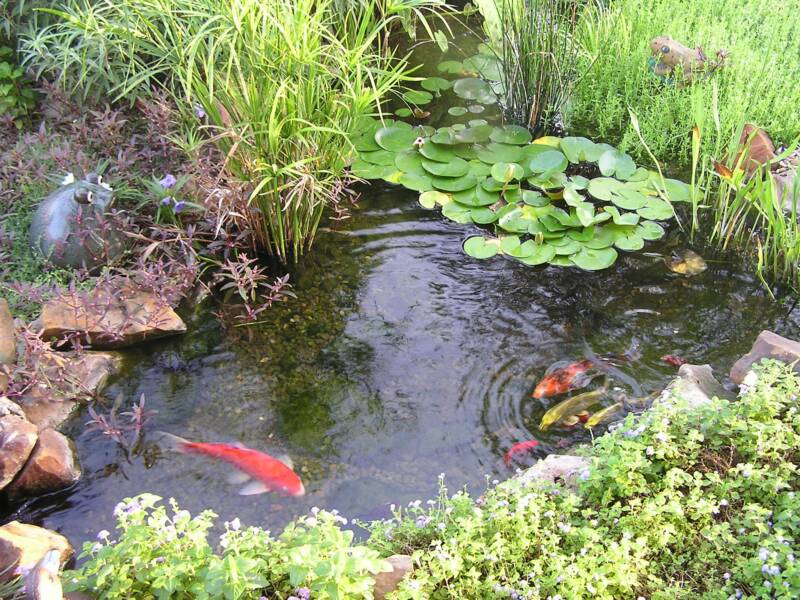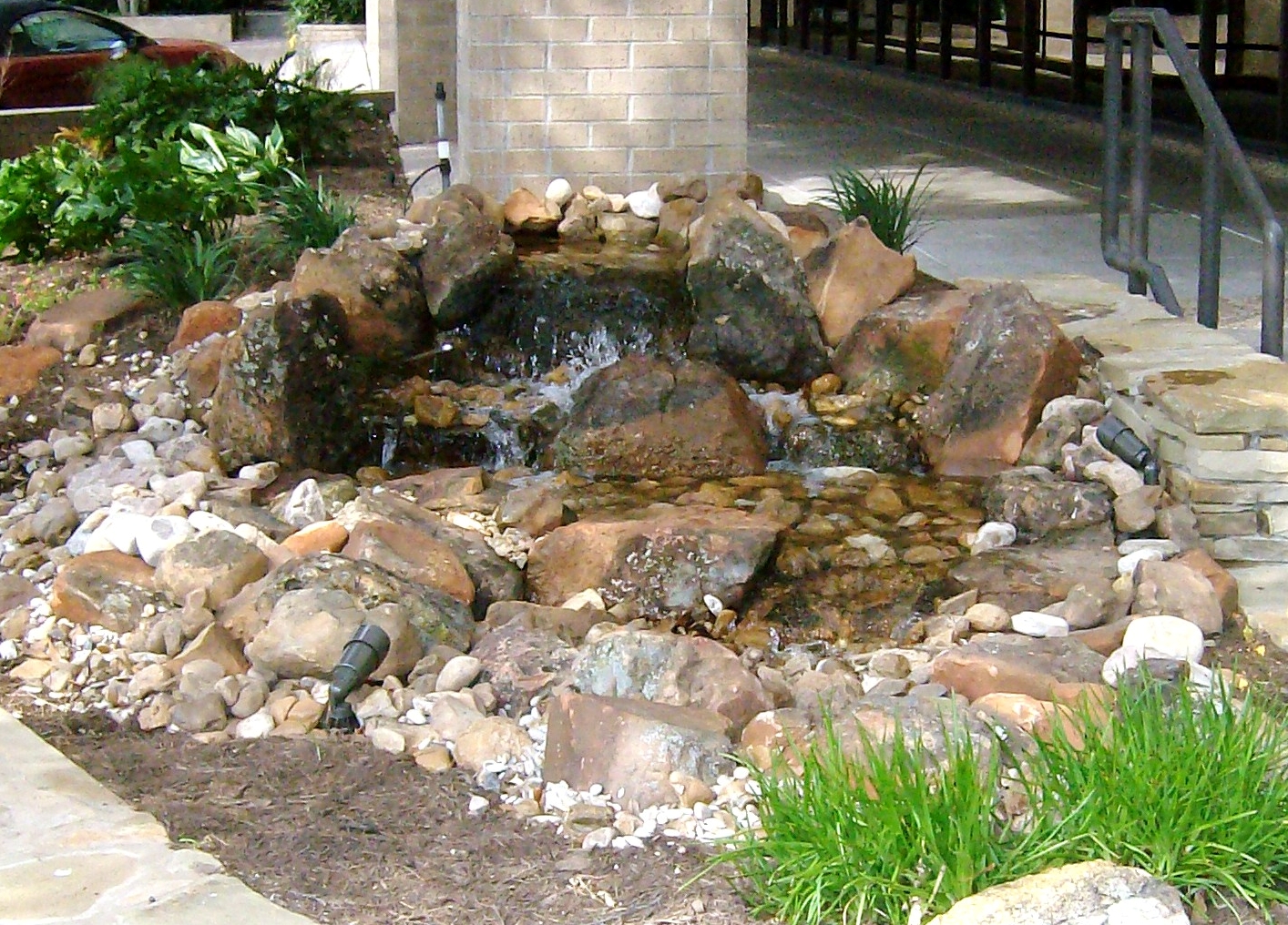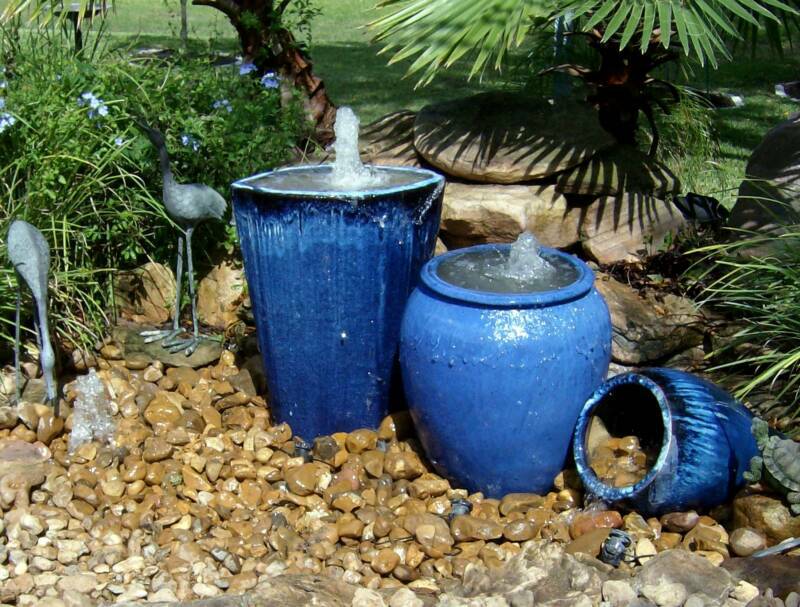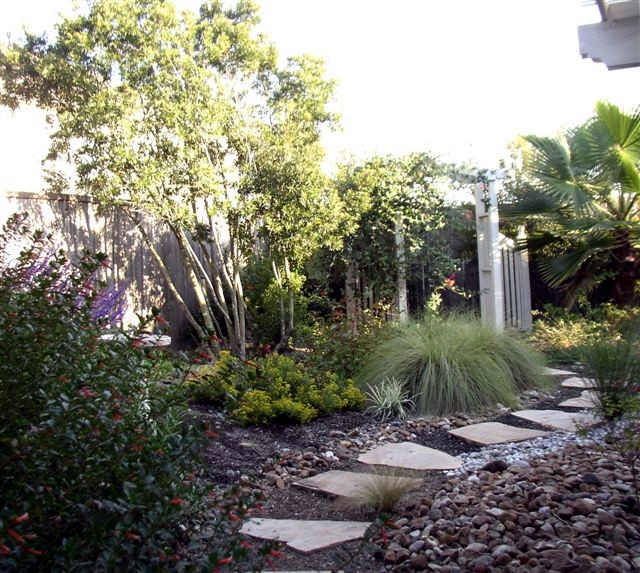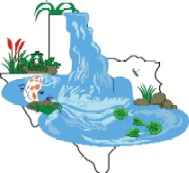


Rainwater Harvesting
Organic Ecosystem Ponds
Pondless Waterfalls
Urn and Fountain Features
Water-Wise Landscapes
Meet Your Water Feature Professionals


Texas Ponds and
Water Features
Rainwater Capture and Waterfalls
by Matt Boring
Wow, I'm so excited about the role of water features in future green technology that I almost can't sit still to type this article for you. I just got back from an advanced water feature training class in Ft. Worth. I attend several of these per year to learn new things from other pond builders and share things that I've learned with them. This kind of training and interaction keeps ours the strongest network of ponding professionals in the country. It's only a fraction of what we must do each year to maintain our Certified Aquascape Contractor status, but it's all worth it to stay on the cutting edge of the industry and to be in on new innovations before they hit the mass market and get 'watered down', so to speak, by builders with less training. This time we were installing a revolutionary new prototype for rainwater capture combined with a waterfall.
Everyone knows that rainwater is the best water to use on your plants. Besides its lack of chlorine, it contains more nutrients and micro-nutrients essential for healthy plant life. Eighty percent of rainfall in urban areas runs off into storm sewers rather than soaking into the ground. By capturing rainwater before it enters the sewer system it can be filtered, stored, and used later on residential or commercial properties. Currently, most rainwater capture systems direct rainwater from the downspouts right into above-ground cisterns. Some utilize traps so that heavy items such as small stones can settle out before entering the main storage chamber. When you want to use the rainwater, it is discharged via a gravity-fed faucet near the base of the cistern. The more water in the unit, the higher the pressure would be at the faucet. This is usually fine for watering small gardens but for other uses was impractical. Besides, when the water was in the cistern, it sat stagnant—a perfect breeding ground for mosquitoes.
But just as the Model T eventually led to the Lexus, a new generation of rainwater harvesting systems is about to hit the market. The new (in fact, not even out yet) RainXChange System from Aquascape is about to change the way the world thinks about rainwater capture and storage. It really blew me away! It's revolutionary both in its design and how it functions and I couldn't have been more amazed while learning about this system as we were installing it. The one we were putting together would be on the scale of a commercial property's needs, though it could easily be done for a residence with enough space (and money to spend.) By the time it was done, we had used over 65 tons of stone and brought in 85 yards of soil. Let me briefly take you through the system and see if you don't agree this this is a great idea that will change people's perceptions about rainwater capture and reuse.
First, a large excavation is dug over five feet deep. The excavation is lined with a fabric protective underlayment and then with the same liner we use in our ponds. Then the intake manifolds and snorkel units that will house and allow easy access to the pumps are installed so that water can be pulled in from the very bottom of the excavation. This project will use two large pumps so it has two snorkels. Next, the excavation is filled with a matrix of modular plastic tanks. The more water you want to hold, the bigger the excavation and the more tanks you use. This one will hold around 2500 gallons. Catch basins are then dug into the ground under each downspout from which you want to catch the rainwater. These catch basins contain both a first-flush rain filter that should be cleaned annually and a settling chamber that allows solids to settle out. The filtered water is then routed to the underground storage area already constructed.
On top of the water storage matrix, large boulders can now be set or a patio constructed or planting areas can be restored. The point is that this matrix is strong enough to drive a semi truck over, so you can do pretty much whatever you want as long as a small area is left open at the base of the waterfall to allow the water back underground. From the other side of the water storage area a smaller overflow matrix will be constructed. When it rains and the underground chamber is full, excess rainwater will drain into the smaller underground chamber, this one without liner, that will allow the water to soak out into the ground on all sides rather than simply adding to the water that's running off the surface.
A hill is being built from fresh soil as pond-less waterfall is constructed behind the underground water storage area. The rainwater stored in that area will now be pumped from the bottom of the matrix to Biofalls units at the top of the hill and will return via the waterfalls. This keeps the water nicely oxygenated and since the water underground doesn't sit stagnant, mosquitoes won't want to breed in there. It's a great way to put something beautiful in your landscape and do something that's good for the environment at the same time. It's also good because it reduces demand on municipal water systems. And if you don't have room or want a waterfall in your yard, the RainXChange System can also be used with spilling urns, stones, or other statuary.
'But,' as Ron Popeil said once, 'Wait! There's more!' You may be asking yourself, 'How do we get that water up out of the ground when we want to use it, pump it out by hand like the pioneers?' Not hardly. An electronically-controlled pump is attached that sucks water from the waterfall pipes and out through a regular hose bib, better known as an outdoor faucet. When you turn it on, the pump senses the drop in pressure and kicks on, supplying you water under a constant steady pressure. This allows you to use a variety of spray nozzles, water hoses, or other attachments more reliably. A low water cut-off switch keeps this pump from turning on when the water level in the basin is too low so the pump won't be damaged by running dry.
This is one of the most exciting new things I've ever been a part of and can't wait to start installing these units when they're released later this year. I hope I haven't been too technical or hard-to-follow. If you're ever in Ft. Worth, TX stop by Whiz-Q Stone and check it out in person. You can pick up a bottle of Garret Juice while you're there.
Until next time...........
Happy Pondering!
TexasPonds.com

